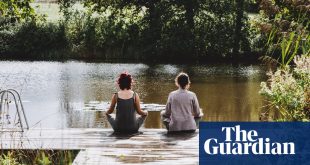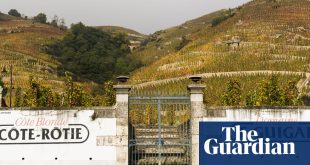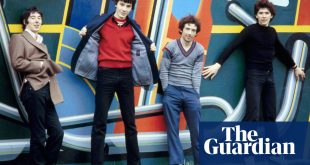The noise of the town had faded away and there was nothing on the horizon. No windmills, boats, islands or dikes. Ahead was the void of a glassy-calm lake that stretched for 270 sq miles around us. The landscape was static, empty, elemental. “We’re trying to wipe the slate clean and create a new natural paradise,” said Roel Posthoorn, my Dutch host. “I think the heavens would approve.”
Playing God has been on Posthoorn’s mind for a while. We were on our way to Marker Wadden, seven islands so new their coastlines are still being redrawn (five are accessible and two more are set to open next year). All have been artificially created six miles off the coastline of Lelystad in Flevoland and, as nature continues to dictate new rules, they are changing rapidly. Wide, sandy beaches are being sculpted by gently quivering waves. Migratory birds are arriving to create nesting habitats. Bullrushes and reeds are thriving in wetlands. As well as this imagination-freeing Eden, a sustainably minded research lab, day pavilion and info centre, cafe, artist’s studio and four holiday cabins have opened to attract overnight visitors and volunteers. All are off-grid and just over an hour from Amsterdam, but feel much further away.
Rays reflected on to the shore as our boat pulled up at the rudimentary wooden dock on the main island, Haveneiland. It hardly seemed real. Surveying the beach in blazing sunshine, we saw a medley of undulating dunes, empty coves, tranquil bird hides, born-yesterday wetlands and, everywhere, nature flourishing, undisturbed and at peace. Insects wheezed in their thousands. A murmuration of silver-grey terns clustered overhead. From the cowboy village cluster of cabins, a pathway of shells gave way to a just-completed trail through marshlands and then, further away, to a Maldives-style boardwalk leading to a curl of fudgy beach.
I wasn’t expecting to see a nude sunbather on my first afternoon. But as wonderfully free as the Dutch can be, much of what is appealing about the Marker Wadden is the sense of complete freedom the islands give. Out of the corner of my eye, I saw a couple of day trippers splashing in the shallows farther along the bay. Next, a barefoot cyclist rode past as if he were in the Caribbean.

“Take a moment to watch the ferry leave this evening,” Posthoorn, who is the islands’ mastermind, advised while we clambered up a dune to see Europe’s newest coastline. “That’s when the island becomes yours. It’s a remarkable, Robinson Crusoe kind of feeling.”
If Posthoorn had done his best to prepare me for the sight of life flourishing on the islands, nothing could prepare me for its dazzling architecture. In keeping with a Dutch love of design, the island’s principal landmark isn’t a lighthouse or transmission tower. It’s a pitch-roof watchtower, all clean lines and beach chic, and an incredible feat that meshes the angles of a submarine periscope with an Apollo moon unit.
Then there are the wonderfully innovative beach cabins, which opened in 2020, with Ikea furniture, energy-efficient fittings and sand-to-sky windows to bring the outside in. Anchored amid the dunes, the buildings are entirely made from sustainable timber, and solar-powered, with a wind turbine as a backup, and water drained and purified on site. Despite the completely self-sufficient system, they wouldn’t look out of place in the Hamptons.
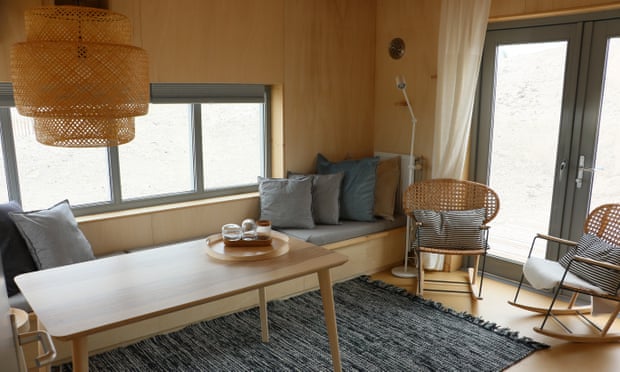
The artist’s studio, in which I stayed, is made up of two distinct units: one with lounge, kitchen area, double bedroom and shower, and the other with big windows and sweeping terrace for gazing out across the dunes to create your Monet or Degas masterwork. Visitors can also come with a boat, kayak or canoe, though moorings must be reserved in advance.
On a walk around Haveneiland that evening, the idealism of it all was clear. Today, after the reclamation of sand, peat, clay and silt from the inland sea to the south, the Markermeer, an ark-full of birds, bats and insects has settled and numbers are soaring. They now number 700 species, including 2,200 nesting terns and 250 breeding pairs of pink-tinged avocets, the biggest colony in the Netherlands. Nobody expected such an explosion of life – or flamingoes or exceptionally rare gull-billed terns, for that matter. God took a week to create the earth, but the Dutch are still tinkering with the Netherlands.
To fully understand the Marker Wadden, it pays to backtrack a little. Open to day trippers since 2020, the islands were first devised in 2011 by Posthoorn and Natuurmonumenten, a not-for-profit, lottery-funded wildlife movement. The idea was to reverse four decades of environmental damage on the Markermeer, a body of water siphoned off from the Zuiderzee, as part of a colossal land reclamation project that was never finished.
Over time, the water quality deteriorated, the fish population fell into sharp decline and the inland sea was all but written off. What followed was an ambitious project to save the limpid waters and protect the biodiversity on Lelystad’s doorstep. Now, early success has seen the archipelago absorbed into the larger Nieuw Land national park.
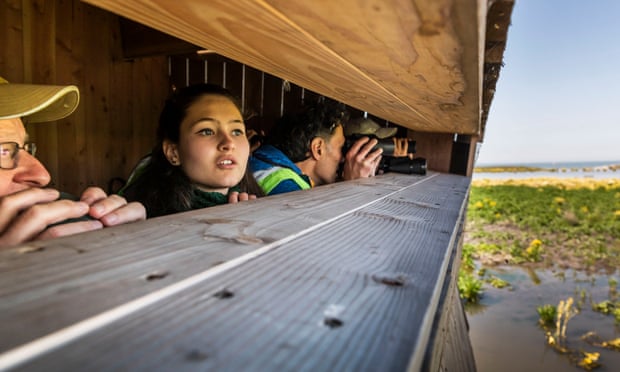
After a meander around the wetlands the next morning, I joined volunteers Alexandrien van der Burgt and Monique Smaijers from Delft and Vorden for coffee at the day pavilion. They had been inspired to come and lend a hand for a week and, as well as monitoring the birdlife, were guiding day visitors around Haveneiland’s looping pathways.
“It feels like we’ve been dropped into a new country – it’s all so pure,” van der Burgt told me. “We have a responsibility to take better care of the planet and what’s happening here now is inspirational. It’s hard to believe how many birds, butterflies and frogs there are.”
As much as I wanted to stay for another mind-calming day or two to help – also to swim alone in the water, to cycle with eider ducks and wild geese and to sunbathe nude, perhaps – it was time to return to the mainland.
Much will change here over the coming years. Of that there is little doubt. And yet the Marker Wadden is a reminder – a totem – as to how we, too, can change and begin to see the world anew.
Accommodation was provided by Natuurmonumenten. The cabins are open year round, with prices from €379 for four nights (minimum two-night stay) including the ferry transfer. A return day ticket costs €25.50 return. A 90-minute guided island tour with a volunteer costs €10. For more information, visit visitflevoland.nl/markerwadden
 Top Naija News: Nigerian News, Breaking News Nigeria and World News Top Naija News is a daily news publication in Nigeria, delivering the latest breaking news in Nigeria and around the world.
Top Naija News: Nigerian News, Breaking News Nigeria and World News Top Naija News is a daily news publication in Nigeria, delivering the latest breaking news in Nigeria and around the world.
